5 yoga moves for better posture
Improve bad posture with these simple yet effective yoga poses
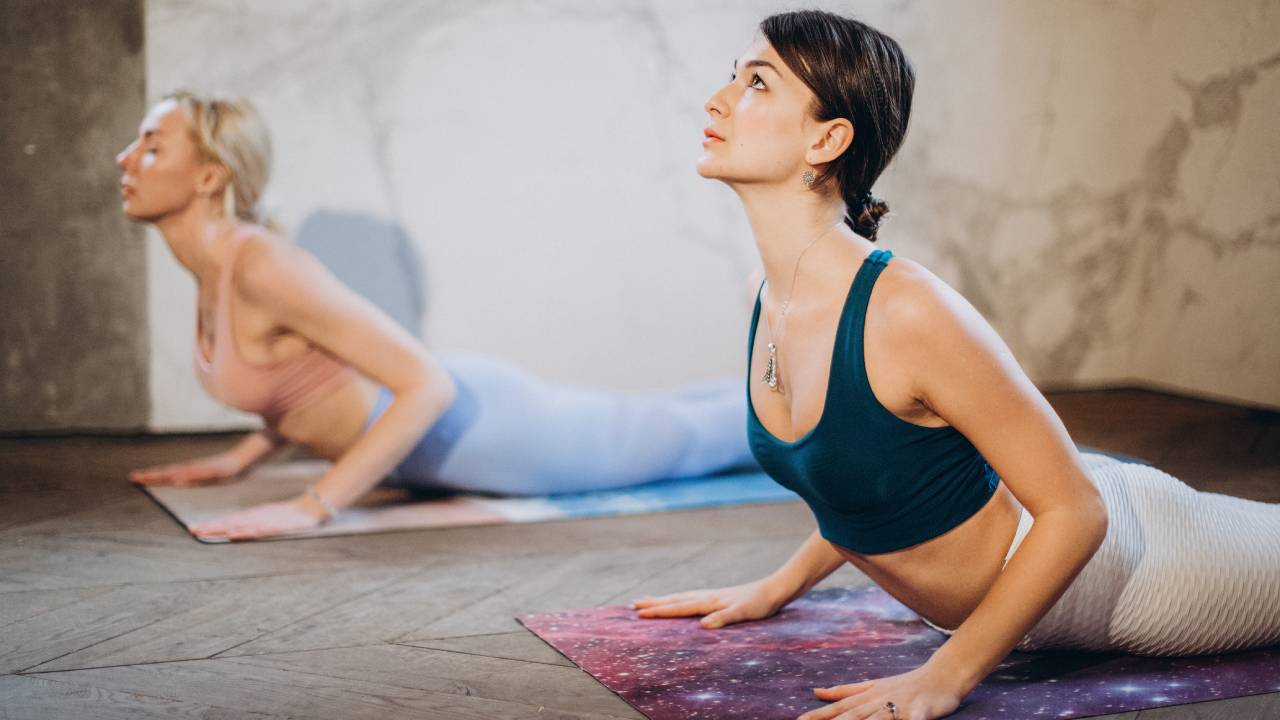
Bad posture can be caused by habitual patterns in regards to the way we sit and stand. We repeat the way we sit and stand day in and day out and mostly with no conscious awareness of it.
Bad posture can look like a hunched upper back, rounded shoulders and the head being too far forward. This can lead to tightness in the chest and shoulders. People can also experience lower back pain, pain between the shoulder blades and stiffness in the neck.
The effects of bad posture are underestimated but it can be the cause of discomfort for many people. However, all is not lost as it can be rectified with an awareness of how you stand and sit and by regularly practicing some simple yoga postures.
So, grab your best yoga mat and pull on your favourite yoga pants, and try out these 5 yoga moves for better posture.
1. Cat cow
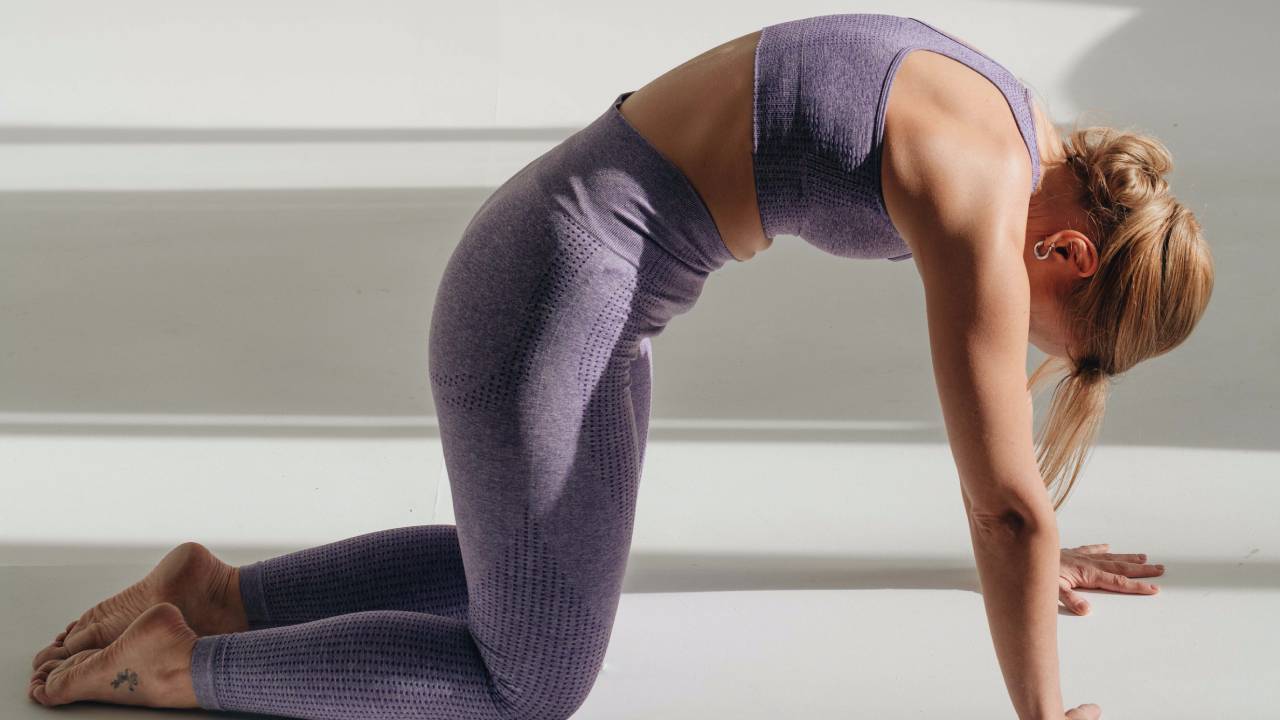
Cat cow is one of the easiest yoga postures to master and feels so good when muscles are feeling tight. It helps to move the spine, loosen the back muscles and aids flexibility in the neck. It’s like a massage to the spine as well as the front of the body, stretching the core muscles. The core muscles, back muscles, neck and shoulders can become rigid with bad posture so by opening the front and the back of the body, it can lead to improved posture and the ability to sit and stand up straight.
Step 1: From an all fours position, spread your fingers and point your toes to the back of your mat. Have your hands roughly under your shoulders and knees under the hips. (If your wrists feel sore, try placing your hands ahead of your shoulders so they aren’t stacked).
Step 2: On an inhale, tilt your tailbone to the ceiling, dropping your abdomen towards the floor and looking up.
Get all the latest news, reviews, deals and buying guides on gorgeous tech, home and active products from the T3 experts
Step 3: On an exhale, tuck your tailbone, draw your abdomen in, curling the back and bringing your chin to your chest.
Step 4: Repeat this 5-10 times before moving into the next posture.
2. Sphinx
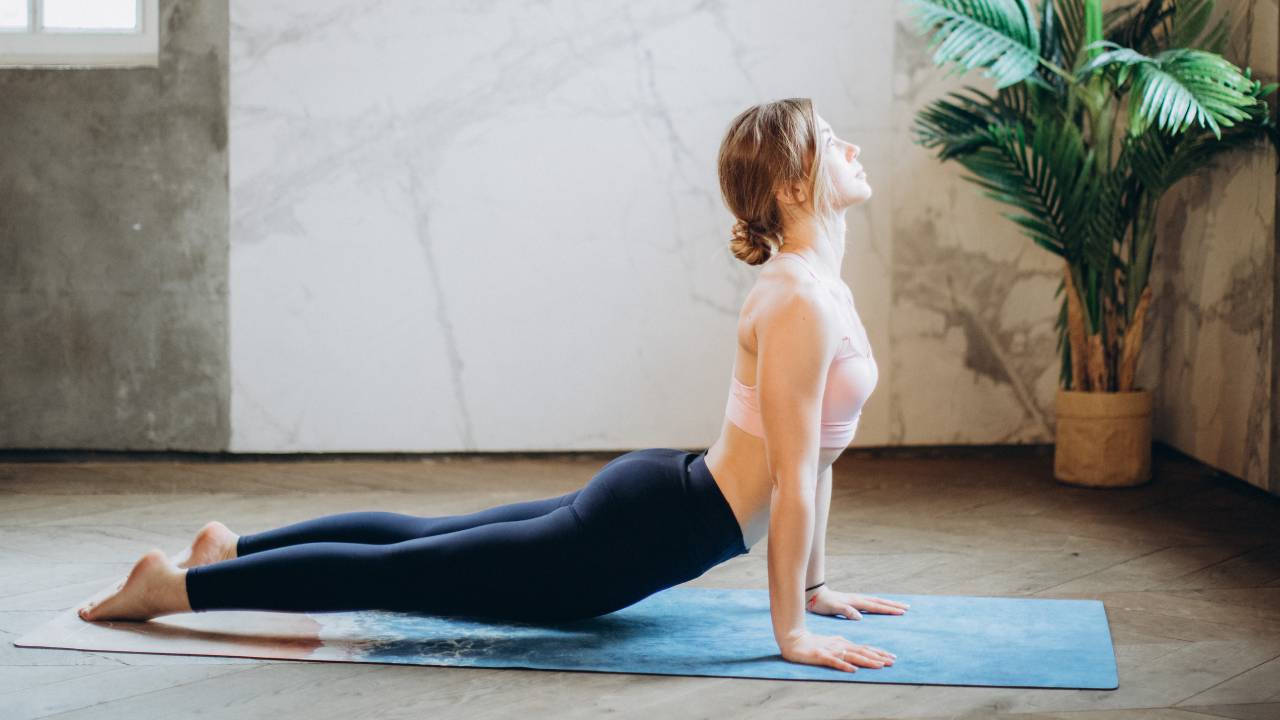
Backbends are really useful for correcting bad postural habits and even people with sensitive lower backs are able to practice the Sphinx pose. Sphinx helps to stretch the front of the body from the hips, core and shoulders while also helping to realign the upper back and neck. By doing this posture, it can help to make standing straight more comfortable.
Step 1: From all fours, come to lie on your abdomen, bringing your forearms to the floor. Your elbows can be stacked under your shoulders for a deeper backbend, or slightly forward from your shoulders for a softer backbend.
Step 2: Your hands can be flat onto the mat or, for some people, it feels more appropriate to let the hands come together, with the palms touching. Notice what feels best for your shoulders.
Step 3: For sensitive lower backs, consider taking the legs wider. Lift a leg up at a time and lengthen it away from your hips. You may feel your hip flexors stretching as you do this. Allows the tops of your feet to rest onto the mat.
Step 4: Pressing into your forearms, roll your shoulders back and down away from your ears and lift your chest up. Keep your gaze forward to help lengthen the back of the neck and correct hunched posture.
Step 5: Stay for 3-5 deep breaths before lowering down to the floor to come out.
3. Downward facing dog

Downward facing dog is a great way to counteract bad posture. If you spend a lot of time behind a desk or driving, you may find that you hunch your shoulders forward and spend little time sitting up straight. Downward dog helps to bring the upper spine back into alignment, helping you to comfortably sit up straight.
Step 1: From an all fours position, spread your fingers wide, tuck your toes and press your hips up and back.
Step 2: Keep a bend in your knees to lengthen your spine. Try to bring your chest towards your thighs.
Step 3: Take 3-5 deep breaths before bringing your knees back to the mat.
4. Cow face arms
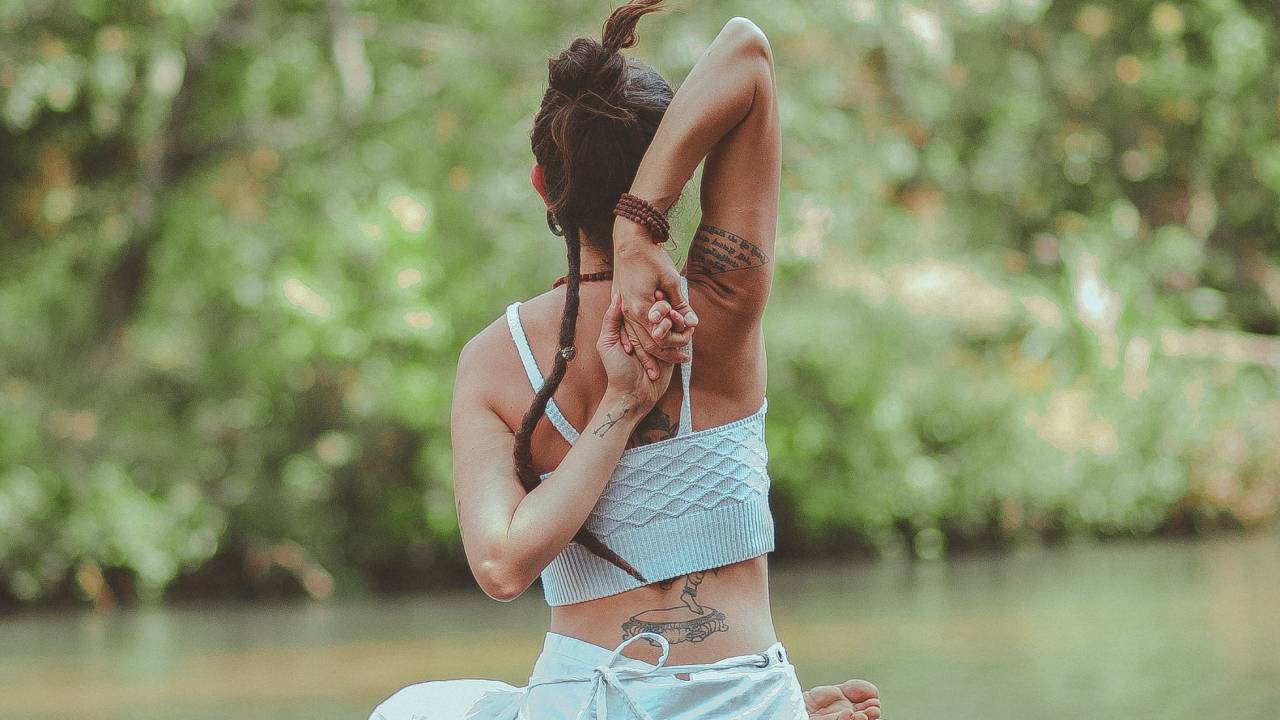
When we’re stressed, we may have bad posture as we sit awkwardly or spend long periods of time sedentary. Think about when you’re working on a deadline at work, how often do you move around and how do you sit? When stress hits, we tend to round the shoulders and close off the chest.
Cow face arms helps to combat shoulder stiffness and rounded shoulders. It uses both the internal and external rotation of the shoulders, oiling this complex joint and releasing tight chest muscles. This posture also helps to bring the upper spine and neck into alignment.
Step 1: You can do this standing. On an inhale, lift your right arm up and place your palm in between your shoulder blades.
Step 2: On an exhale, stretch your left arm out and round to reach for your right fingers behind your back. The back of your left hand will be touching your back. You can use a belt if your hands don’t connect.
Step 3: Take 3 deep breaths before changing to the other side, starting by lifting the left arm up.
5. Wide-legged standing forward bend
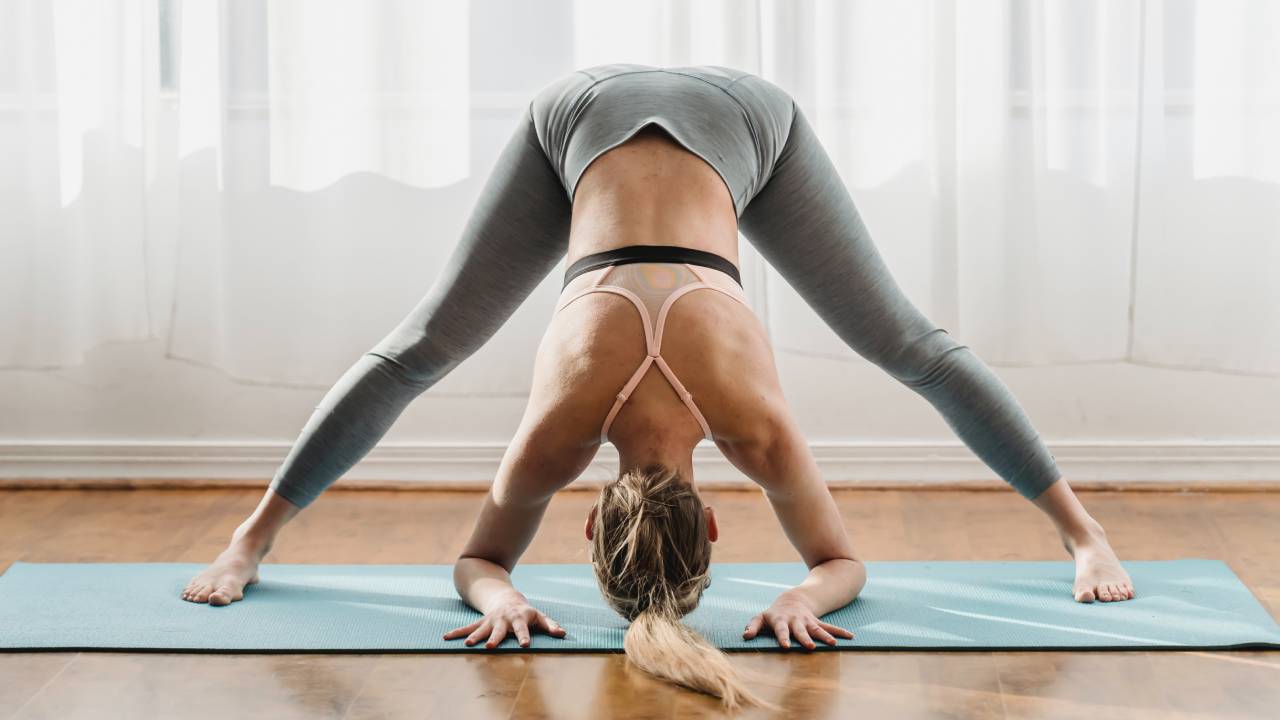
There is a variation of this posture that can help to open the shoulders and chest. By doing this variation, the arm position allows you to draw the shoulders back, squeezing the shoulder blades together. This movement helps to correct bad posture, opening the muscles that can sometimes get tight in the fronts of the shoulders from sitting with a hunched back.
Step 1: Stand with your legs wide, around a leg’s distance apart. Turn your toes slightly in so your feet become parallel.
Step 2: Clasp your hands behind your back, elbows moving towards each other.
Step 3: As you inhale, lift your chest and begin to straighten your arms. On an exhale, fold forward and allow your arms to move over your head.
Step 4: Keep squeezing your shoulder blades together and lifting the tops of your shoulders away from the floor. This will give you the best opening in your shoulders.
Step 5: Hold for 3-5 deep breaths before pressing into your feet (bending the knees for sensitive lower backs) and coming back to stand. Release your arms and bring your legs together. Let the body settle before continuing with your day.
Interested in yoga for the winter? Try these 5 popular yoga poses for this winter
Kat has 10 years of yoga teaching experience with further training in supporting injured students. She is qualified to teach Yin Yoga, Hormone Yoga Therapy and more traditional forms of Hatha yoga. She also has a certificate as a Yoga Therapy Practitioner.